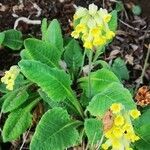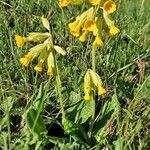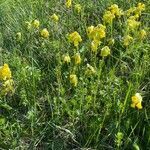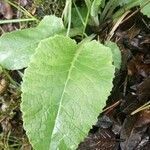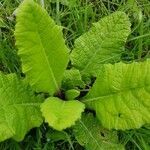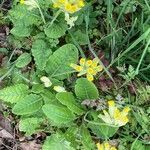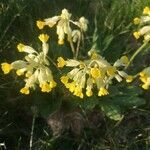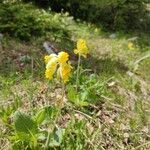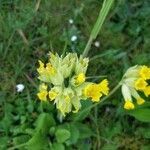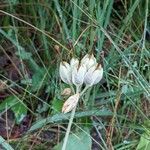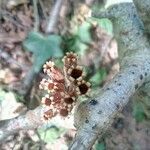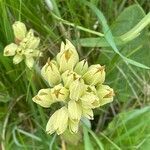Plants 8-30 cm, herbaceous; rhizomes thick, short; rosettes sometimes clumped, vegetative parts efarinose but often pubescent. Leaves not aromatic, indistinctly or abruptly petiolate; petiole winged; blade with deep reticulate veins abaxially, ovate to ovate-oblong, 5-20 × 2-6 cm, thin, membranaceous in age, margins coarsely toothed, apex acute to obtuse, surfaces pubescent, hairs simple. Inflorescences 5-16-flowered; involucral bracts plane, unequal. Pedicels erect to drooping, moderately thick, 3-20 mm, length 1-3 times bracts, flexuous. Flowers heterostylous; calyx pale green, broadly campanulate, 0.8-2 cm; corolla yellow, with orange spots at base of lobes, tube 8-20 mm, length to 1 times calyx, eglandular, limb 8-28 mm diam., lobes 8-14 mm, apex slightly emarginate to distinctly notched. Capsules ovoid, length to 1 times calyx. Seeds without flanged edges, minutely vesiculate. 2n = 22 (Europe).
More
A herb. It grows 30 cm high and spreads 40 cm wide. It keeps growing from year to year. The leaves can be smooth or have coarse teeth. They are 5-20 cm long. The leaves grow from the base of the stem. The flower stems are downy. They have up to 16 yellow flowers. The flowers are sweet smelling. The sepals are pale green.
With yellow fls and somewhat inflated cal, occasionally escapes in the n. part of our range.
The flowers are added to salads. They are also used in conserves and pickles. They are also used for wines and for tea. The flowers have also been candied. The young leaves are eaten raw in salads and cooked as a potherb and used as a substitute for tea. The leaves are used for sarma in Turkey. They are rolled around a filling of rice or minced meat.
